Abstract
Despite the apparent similarity between stimulus equivalence and verbal behavior, these phenomena have been described in different terms. With different terminologies for each phenomenon, the precise nature of their relationship is difficult to determine. To explore this relationship, this paper first defines stimulus equivalence using a synthesis of the mathematical definition of the equivalence relation and Sidman and Tailby's (1982) definition. Selected examples of stimulus equivalence are then described as verbal behavior using Skinner's (1957) terminology. The paper then cites instances of verbal behavior that cannot be described as stimulus equivalence and considers whether there are instances of stimulus equivalence that cannot be described as verbal behavior.
Full text
PDF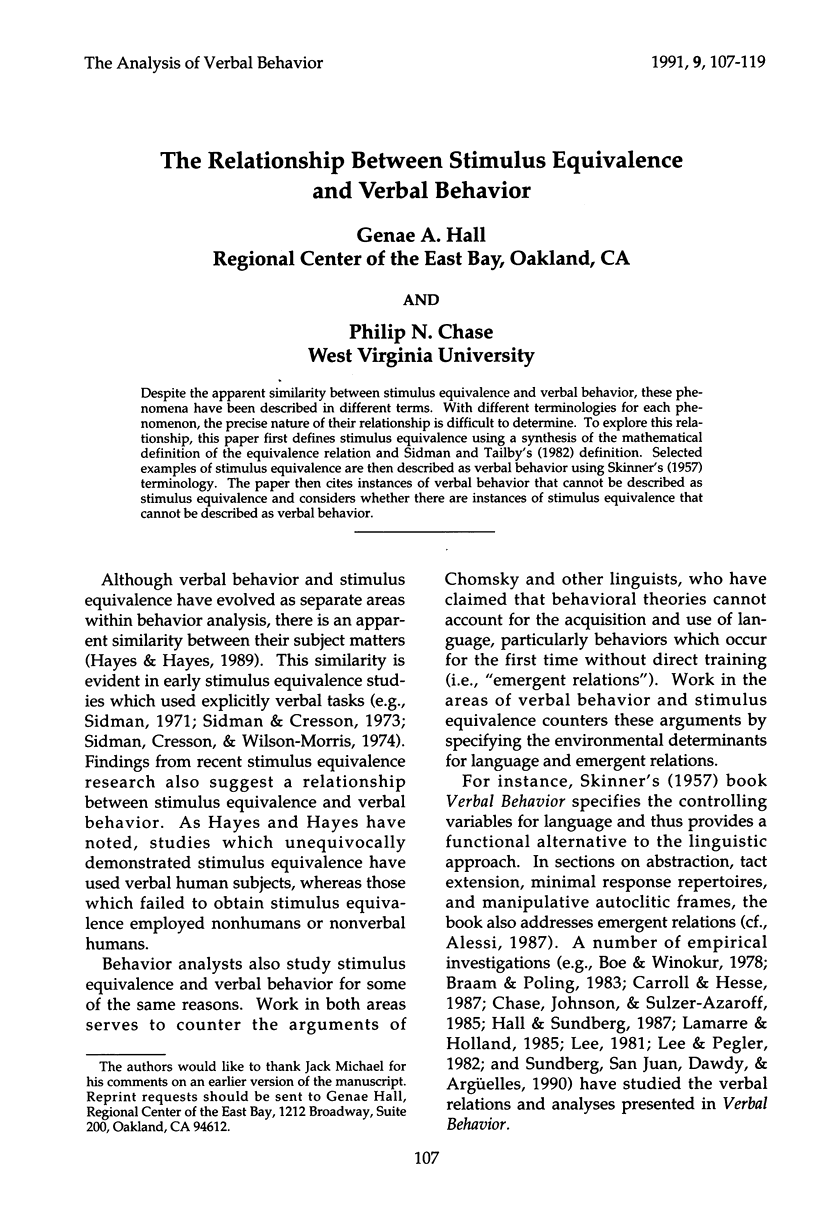
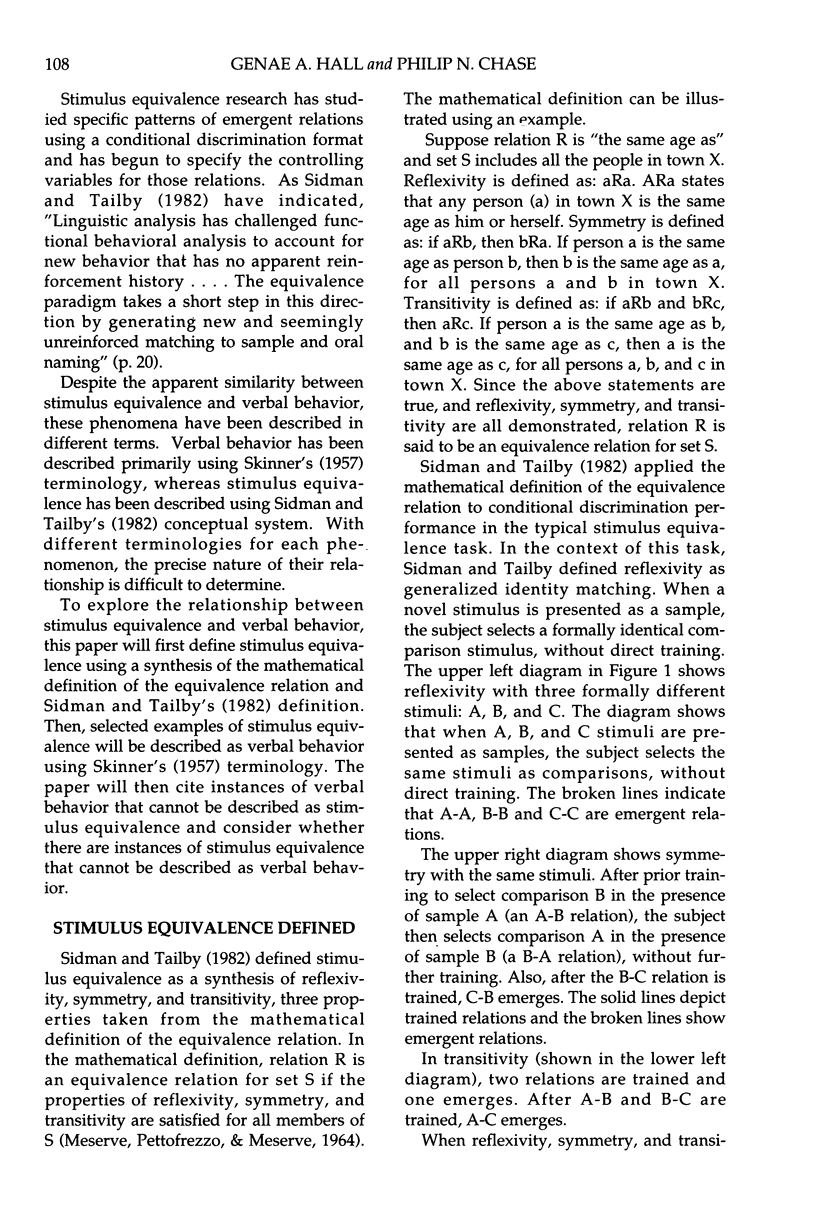



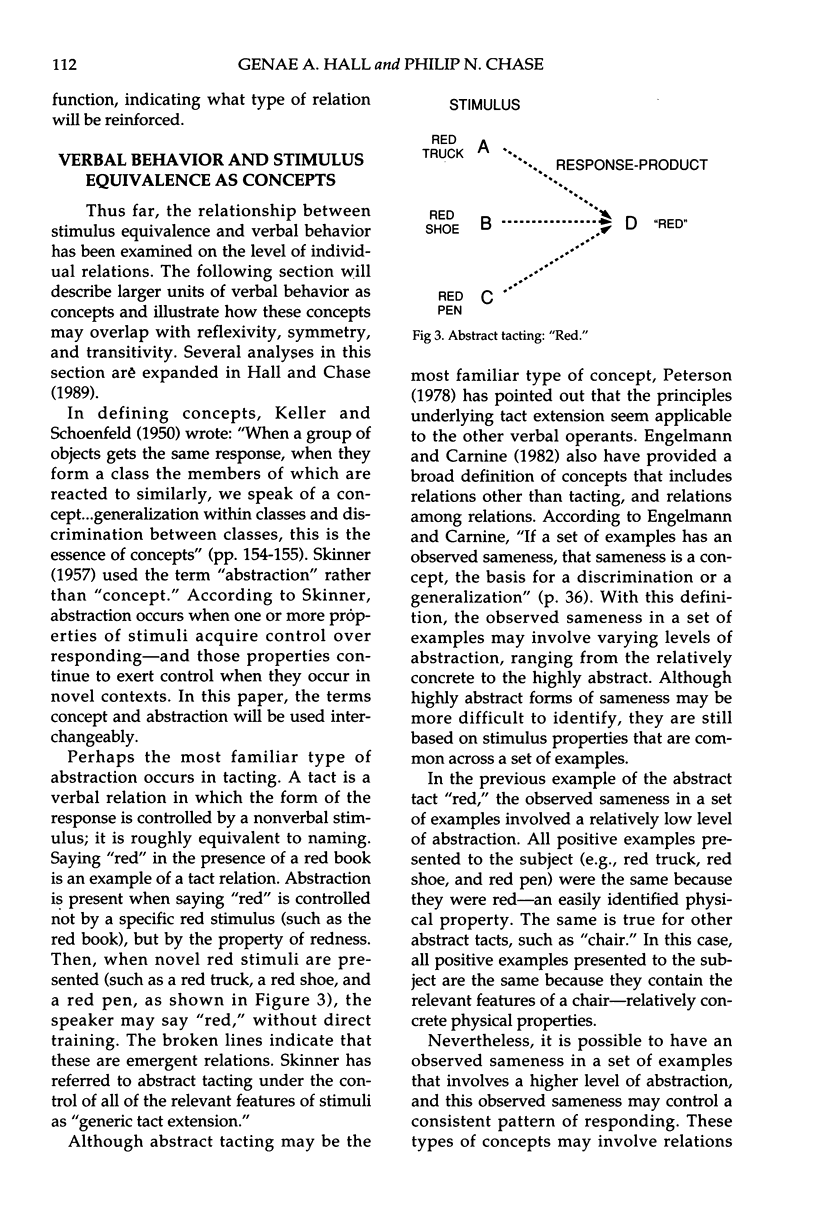
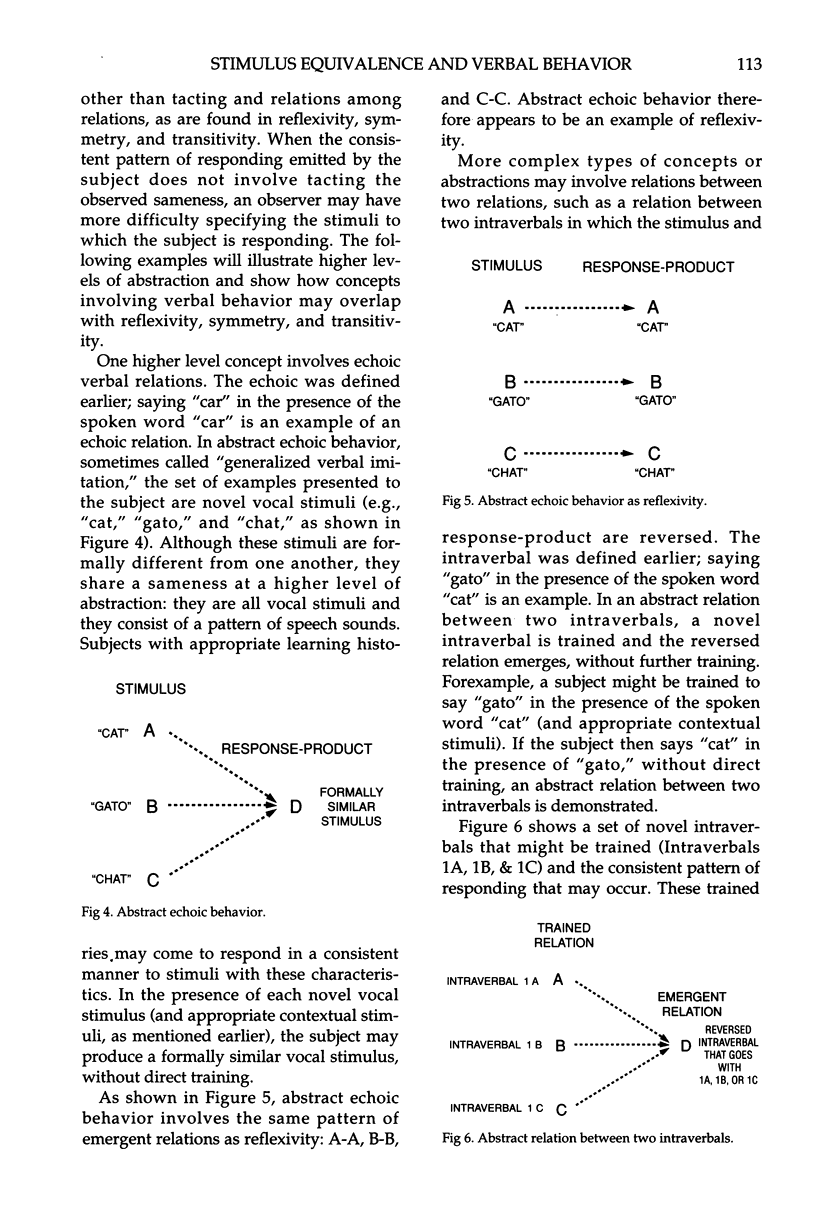



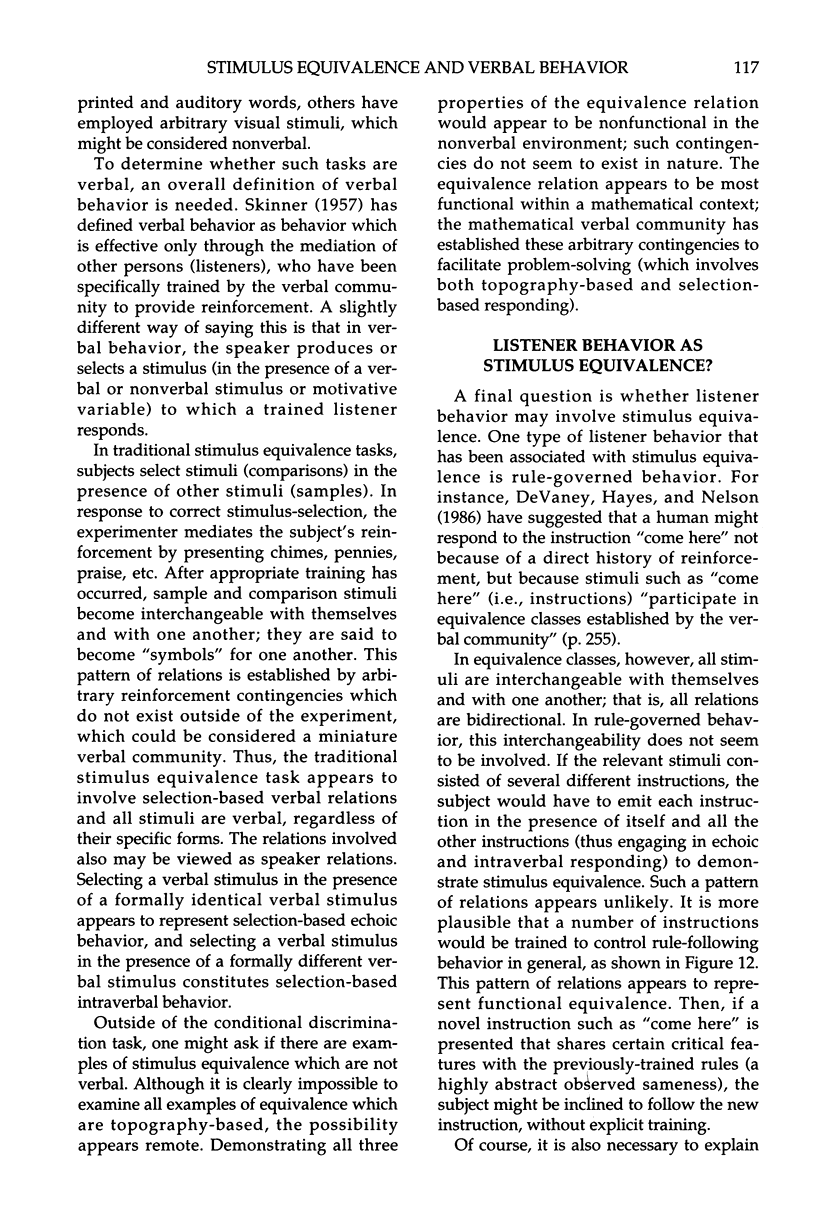

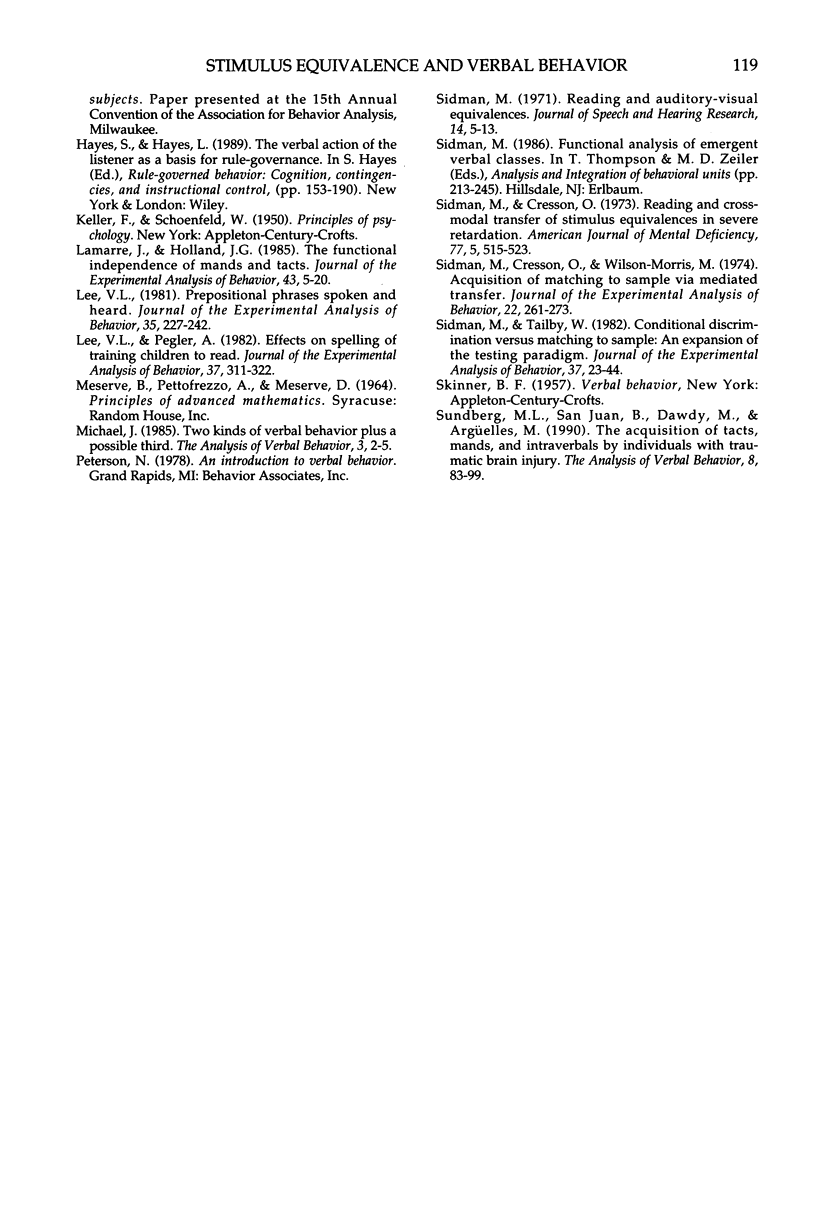
Selected References
These references are in PubMed. This may not be the complete list of references from this article.
- Boe R., Winokur S. A procedure for studying echoic control in verbal behavior. J Exp Anal Behav. 1978 Sep;30(2):213–217. doi: 10.1901/jeab.1978.30-213. [DOI] [PMC free article] [PubMed] [Google Scholar]
- Braam S. J., Poling A. Development of intraverbal behavior in mentally retarded individuals through transfer of stimulus control procedures: classification of verbal responses. Appl Res Ment Retard. 1983;4(4):279–302. doi: 10.1016/0270-3092(83)90030-9. [DOI] [PubMed] [Google Scholar]
- Chase P. N., Johnson K. R., Sulzer-Azaroff B. Verbal relations within instruction: Are there subclasses of the intraverbal? J Exp Anal Behav. 1985 May;43(3):301–313. doi: 10.1901/jeab.1985.43-301. [DOI] [PMC free article] [PubMed] [Google Scholar]
- Devany J. M., Hayes S. C., Nelson R. O. Equivalence class formation in language-able and language-disabled children. J Exp Anal Behav. 1986 Nov;46(3):243–257. doi: 10.1901/jeab.1986.46-243. [DOI] [PMC free article] [PubMed] [Google Scholar]
- Lamarre J., Holland J. G. The functional independence of mands and tacts. J Exp Anal Behav. 1985 Jan;43(1):5–19. doi: 10.1901/jeab.1985.43-5. [DOI] [PMC free article] [PubMed] [Google Scholar]
- Lee V. L., Pegler A. M. Effects on spelling of training children to read. J Exp Anal Behav. 1982 Mar;37(2):311–322. doi: 10.1901/jeab.1982.37-311. [DOI] [PMC free article] [PubMed] [Google Scholar]
- Sidman M., Cresson O., Jr Reading and crossmodal transfer of stimulus equivalences in severe retardation. Am J Ment Defic. 1973 Mar;77(5):515–523. [PubMed] [Google Scholar]
- Sidman M., Cresson O., Jr, Willson-Morris M. Acquisition of matching to sample via mediated transfer. J Exp Anal Behav. 1974 Sep;22(2):261–273. doi: 10.1901/jeab.1974.22-261. [DOI] [PMC free article] [PubMed] [Google Scholar]
- Sidman M., Rauzin R., Lazar R., Cunningham S., Tailby W., Carrigan P. A search for symmetry in the conditional discriminations of rhesus monkeys, baboons, and children. J Exp Anal Behav. 1982 Jan;37(1):23–44. doi: 10.1901/jeab.1982.37-23. [DOI] [PMC free article] [PubMed] [Google Scholar]
- Sidman M. Reading and auditory-visual equivalences. J Speech Hear Res. 1971 Mar;14(1):5–13. doi: 10.1044/jshr.1401.05. [DOI] [PubMed] [Google Scholar]


